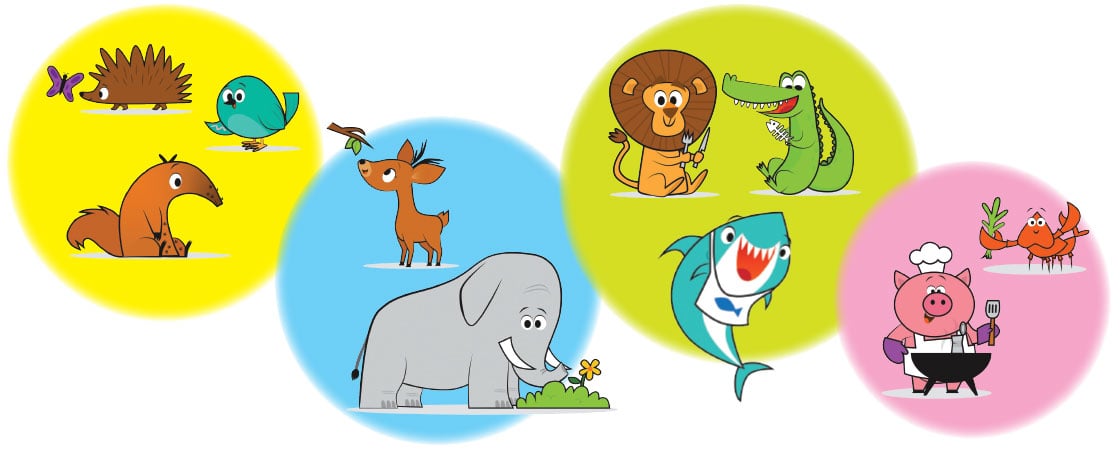When you know
that vore means eat,
you will know
that insectivores feed
on grasshoppers, moths, and butterflies,
mosquitoes, bees, and plain-old flies.
When you know
that carni means meat,
you will know
that carnivores eat
snakes and lizards, deer and lamb,
carrion, birds, fish, and ham.
When you know
that herb means plant,
you will know that herbivores CAN’T
eat anything that moves on a foot,
just foods that spring up from a root.
When you know
that omni means all,
you will know t
hat omnivores call
Everything
they can suck or chew—
sometimes even me or you—
food.

